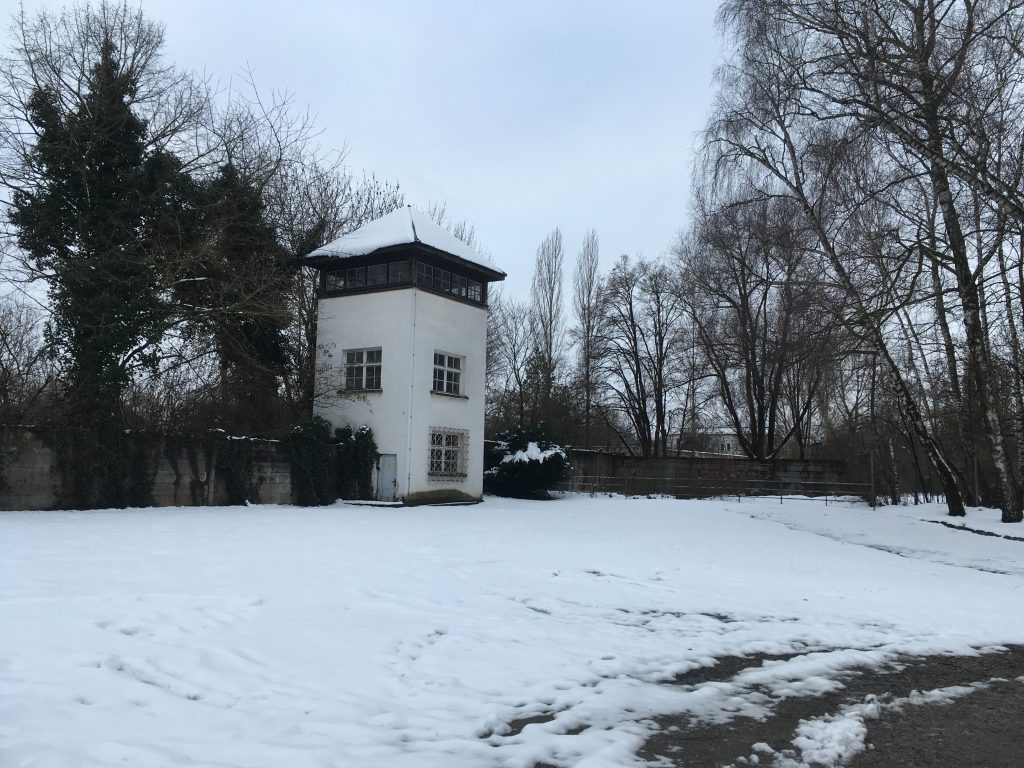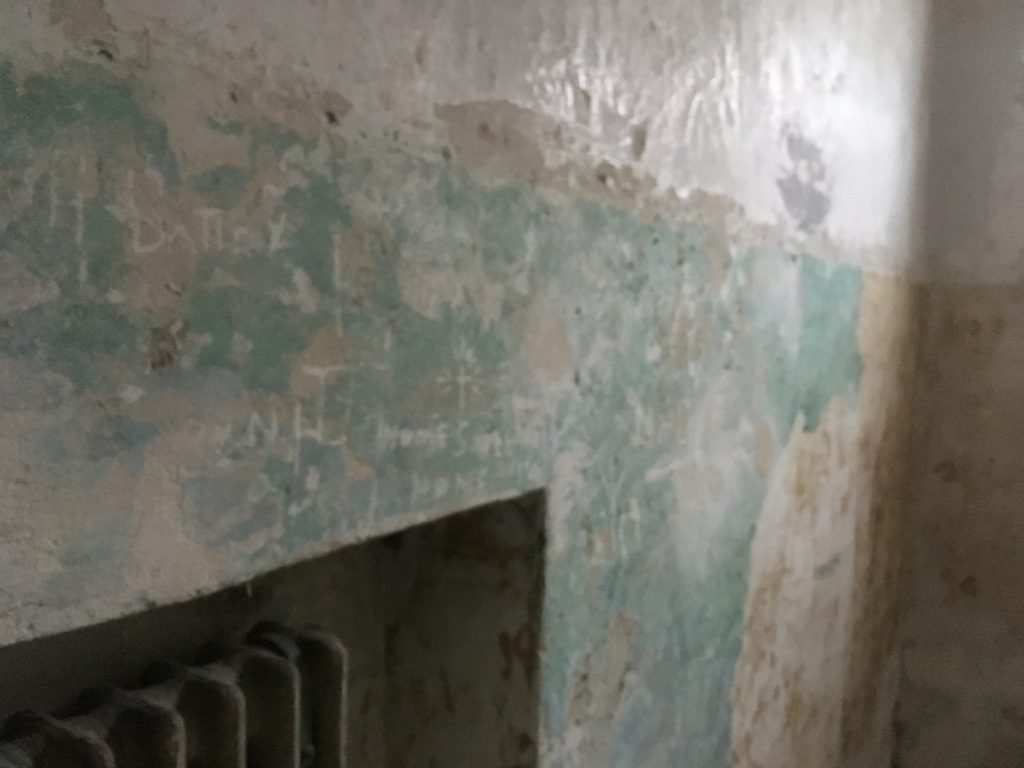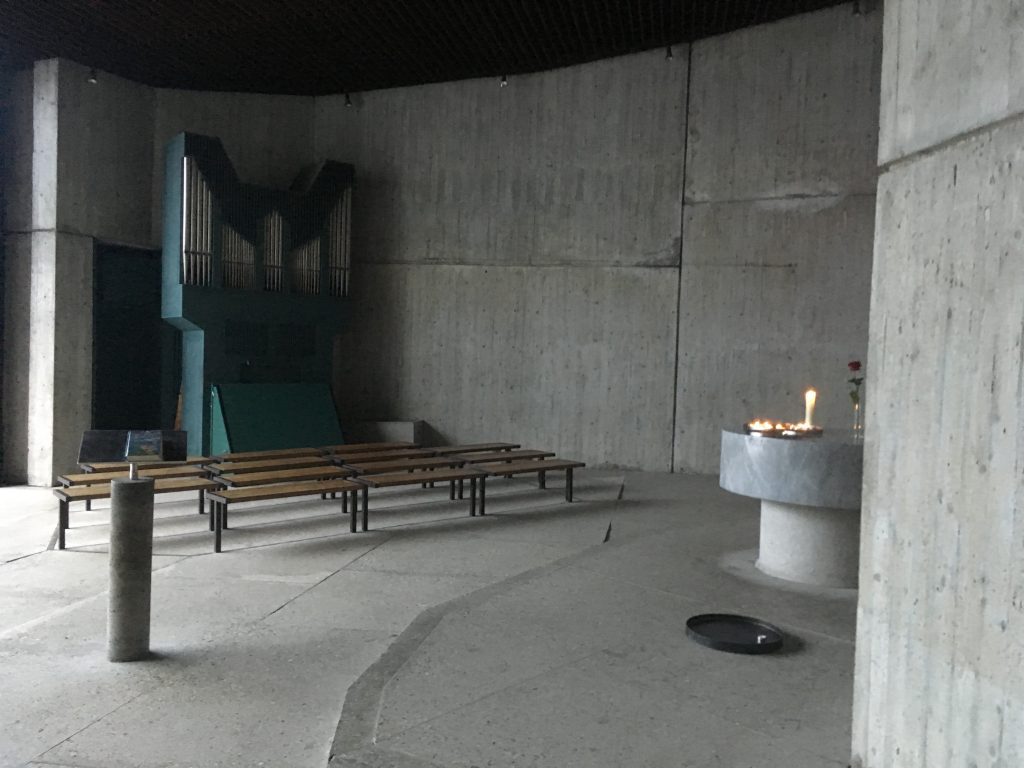This post contains images and references to tragic historical events that some readers may find disturbing.
Not the most well known historical concentration camp site, Dachau was the first site and the blueprint, of what would become the Nazi concentration camp system. I can’t say that I ‘enjoyed’ this trip, but sometimes I think we must go on uncomfortable journeys to learn critical lessons.

To this day, Dachau is a horrifying and a humbling place. On the northern outskirts of Munich, Germany is the idyllic Bavarian town of Dachau. A ten-minute bus ride from the town’s main train station sits the memorial site for the former concentration camp of the same name.
When I told friends and relatives that I “wanted” to visit Dachau during my trip to Munich I was met with many a furrowed brow and inquisitive look. No one ever asked me why, in so many words. But I knew what they were wondering: why would I want to go to such a terrible place?

My answer is pretty simple. I went there to learn. I went to explore the depths of human capability (in all meanings of the word), to better know my own humanity and test my own hypothetical compassion. I went there to feel the residue, what’s left of what happened there and to interrogate history past, present and future.

A place like Dachau is one of our species’ great conundrums. It’s consciously preserved for our collective grief and regret while also consciously forgotten by our collective short-term approach to modern life. It is a place of history, most believe, but I believe its lessons are all too real today.
Unlike any other trip documented on this website, I cannot say that I enjoyed the visit, no. But I left feeling mentally and spiritually inflated, tangibly educated in a way that my 16+ years of elite schooling never did. I learned many things that we are never taught when learning about WWII, the Holocaust and the Nazis and those facts are relevant today.

In the spirit of sharing and learning, below are the 5 lessons I learned from visiting the Dachau memorial site along with poignant images of the memorial site. Please pass along to open minds.
Lesson 1: Dachau is not history, it is the present. Dachau may be an historic site, but it is not an historic artifact. Dachau is humanity. The memorial site has worked hard to showcase all the historical events and conditions that led up to its creation and supported its maintenance – see Lesson #4. Many of those conditions exist in our country and other countries right this moment.
Only by seeing it first hand am I certain that Dachau and its tragedies are possible in any land and in any year. It is only humans that can keep human tragedy from unfolding. Treating Dachau as a once-in-a-lifetime anomaly helps increase the chances that it could develop again under the right circumstances.

Lesson 2:: Americans are under-educated about the scope and structure of concentration camps. As a young student I learned about Auschwitz and Anne Frank. It was inferred that there were a handful of these terrible places, hidden in far corners, used for the most terrible ends, imagined by a terrible maniac and then there was liberation and the end of the war. This is false.

The camps were a system, a corporation, with thousands of locations sprinkled across Europe, structured like businesses, managed with bureaucratic efficiency and often easily encountered by the public. I bet you didn’t know that:
- Starting with Dachau, individual camps and the later network of camps across Nazi annexed territories were planned, mapped, experimented, optimized and scaled over the course of years.
- Main camps were usually surrounded by smaller, satellite camps meaning that camps were near any major location
- Camps were separated into categories: labor camps, killing camps and camps for specialized populations like the disabled
- Camps were sometimes also businesses. Dachau prisoners sold produce from the camp plantation garden directly to townspeople. Some camps made fine pottery and figurines.

If we believe there were one or two or ten camps hidden in isolated countrysides cobbled together in the chaotic panic of a dictator’s war it’s easier to think this can’t happen again. It’s easier to believe that average citizens didn’t know there was a secret prison in their backyard. It’s easier to ignore the cold corporatization that served as the career path for thousands of Nazi personnel. The thoughtfully planned, ubiquitous and time-drawn reality of the camp system is much worse to consider than a mad-man’s whim. Real people watched, helped it come to fruition in their own back yards.

Lesson 3: So many kinds of people were targeted – people like you, like me. When we are taught about the Holocaust, we are rightfully taught about the horrors exercised on the Jewish population. With over 6 million estimated murders, there is no question of the targeting of European Jews, much of which was carried out through the camp system. If you are Jewish, these facts likely mean even more to you than to me as an empathetic student of history, as I am not Jewish.

What I learned at Dachau is that many other kinds of “others” were also imprisoned and killed – some just like me. The memorial site’s team wants us to know this, I think, not to minimize the historical focus on the plight of the Jewish population, but to highlight how easy extremism can spread to any and all people.
Did you know that in addition to Jews all these kinds of people were targeted for camps?:
- Political opponents and activists
- Local leaders of Nazi annexed territories
- Jehovah’s Witnesses and Catholics
- Homosexuals
- Immigrants and migrants
- Asocial (basically a catch-all which records show included single women, the mentally disabled and various colors and races of people)

We must recognize and cherish the Jewish lives lost. We must also face the reality that many of us non-Jewish people might well have registered with some other perceived defect and been captured, tortured and murdered alongside them. This reality makes us all potentially monsters and all potentially victims. I believe that this knowledge would make all types of people much more sensitive to and aware of extremism in the making. When we all can be victimized, we all may be more vigilant. It’s a theory.
Lesson 4: Camps didn’t come out of nowhere – there was time, there were signs. The memorial site hosts a year-by-year history of the political, economic and social conditions that led up to the Holocaust and helped spur on the camp system development and expansion. This is perhaps the most important element of the site for today’s student.

While Germany’s post WWI situation was uniquely characterized by being the political and economic scapegoat for the conflict, many countries, including the United States, are today experiencing several of the conditions that led to the Nazi takeover. Issues like wealth inequality among classes, growth in anti-outsider nativism, ruling political party discord and citizen / voting complacency were key parts to the rise of Hitler.

Did you know that his party never received the majority popular vote? Did you know that he used a state of emergency clause to implement the first of his anti-everyone laws that legalized concentration camps? Unfortunately this sounds familiar.
I can’t say that I know I would’ve acted different than the average citizen, but what the Memorial site teaches us is that the average citizen and the traditional political parties did have several years before Hilter became Hitler. Could they have rallied to find a consensus before he exploited the chaos and frustration? Could they have noticed his anger against migrants and Jews as scapegoating before it became legal internment?

It’s easy to ask these questions nearly 90 years after Dachau first opened its doors way back in 1933. But perhaps these questions are the kinds we can be asking ourselves now as Democrats and Republicans argue over who is right and states of emergency are considered as antidotes to stalemate government shutdowns.
Lesson 5: There was music, poetry, resistance and resilience. If they could do it… If there is a bright spot, it’s in the stories of the people who – against every odd – still wrote and smuggled out poetry, who sang, who fought and survived while personally witnessing the worst of humanity.

The Memorial site archives tell tales of such beauty and it’s almost impossible to imagine it ever existed. But, it did. And it’s a reminder to be grateful for every moment of ease, light and happiness we have on this Earth.
The Human Lesson: If one of us humans can be targeted, any of us can be. I’m still trying to process what this visit to Dachau and all the lessons learned mean for my day-to-day life. Should I run down to the border to defend a child being held in a camp for their migratory status whether I agree with the politics or not? Should I run for office to try and create compassion and compromise in Washington? I’ll admit that seeing the lessons in history is much easier than knowing what to do with them.


